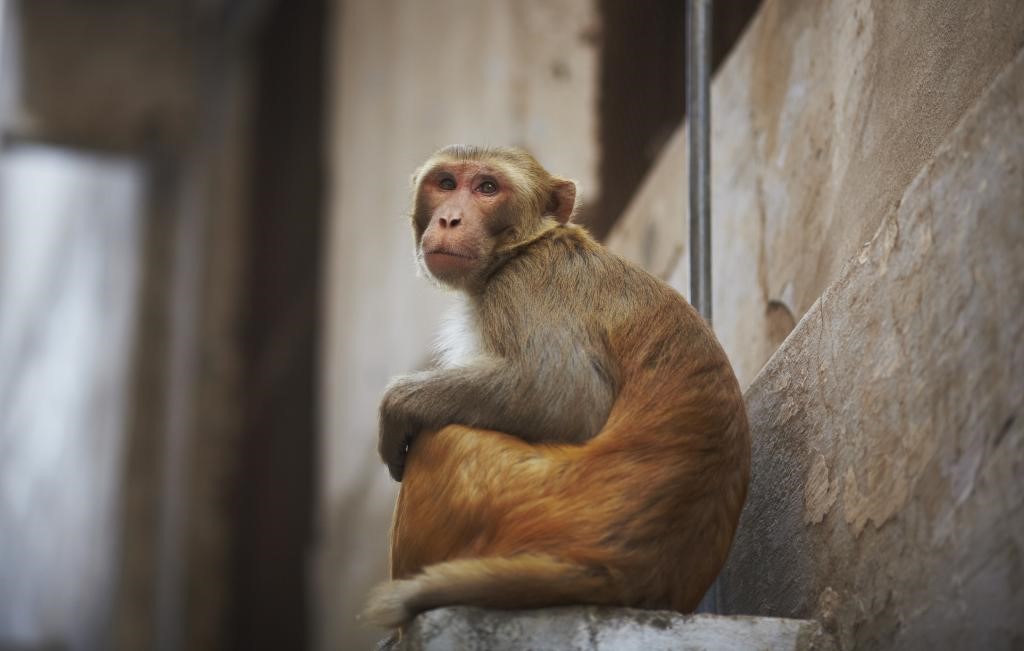Description

Source: DownToEarth
Disclaimer: Copyright infringement not intended.
Context
- The recent case of a 37-year-old man in Hong Kong who contracted B virus after being wounded by a wild monkey highlights the potential dangers associated with zoonotic infections.
Details
Background
- B virus, also known as herpes virus B, was first identified in 1932 when a young doctor, William Brebner, was bitten by a macaque monkey during research on poliovirus.
- Since then, there have been 50 recorded cases of human infection, with 21 resulting in fatalities.
- B virus belongs to the herpes family and is classified as a biosafety category 4 virus, the highest level of biosafety rating.
- Prompt treatment with antiviral drugs can be life-saving, but without treatment, the mortality rate can be as high as 70%.
- There is currently no vaccine available for B virus.
- Macaque monkeys are distributed widely across Asia and have been introduced to other regions.
- Despite their close contact with humans in various settings, there are relatively few recorded instances of B virus transmission outside of laboratory settings.
About B virus
- B virus, also known as Cercopithecine herpesvirus 1 (CeHV-1), is a zoonotic virus that primarily infects macaque monkeys, especially those of the genus Macaca, including rhesus macaques (Macaca mulatta) and pig-tailed macaques (Macaca nemestrina).
- While it typically causes asymptomatic or mild infections in its natural hosts, it can be potentially fatal when transmitted to humans.
Virology and Classification:
- B virus is a double-stranded DNA virus classified within the genus Simplexvirus of the subfamily Alphaherpesvirinae.
- Its genome encodes for various proteins involved in viral replication, immune evasion, and pathogenesis.
- B virus shares similarities with herpes simplex virus (HSV), particularly HSV-1, but exhibits distinct pathogenic characteristics.
Natural Hosts:
- B virus primarily infects macaque monkeys, particularly rhesus macaques and pig-tailed macaques.
- In macaques, B virus infections are often asymptomatic or cause only mild symptoms.
Transmission to Humans:
- Human infections with B virus are rare but can occur through direct contact with bodily fluids or tissues of infected macaques.
- Occupational exposure, such as through bites, scratches, or mucosal exposure to macaque fluids, poses the greatest risk to humans.
- The virus can also be transmitted through contaminated surfaces or equipment.
Clinical Presentation in Humans:
- B virus infection in humans, known as B virus disease or herpes B virus encephalitis, can result in severe neurological symptoms.
- Initial symptoms may resemble flu-like illness, including fever, headache, and malaise.
- As the infection progresses, it can lead to neurological complications such as encephalitis, meningoencephalitis, and ascending paralysis.
Diagnosis:
- Diagnosis of B virus infection in humans typically involves clinical evaluation along with laboratory tests.
- Polymerase chain reaction (PCR) assays are used to detect viral DNA in clinical samples, such as swabs from lesions or cerebrospinal fluid.
- Serological tests, including enzyme-linked immunosorbent assay (ELISA) and Western blot, can detect antibodies against B virus.
Treatment:
- There is no specific antiviral therapy approved for B virus infection in humans.
- Treatment primarily involves supportive care and management of symptoms.
- Antiviral drugs such as acyclovir and ganciclovir may be used empirically, although their efficacy against B virus is not well established.
Sources:
DownToEarth
|
PRACTICE QUESTION
Q. Which of the following statements about B virus is correct?
A) B virus primarily infects humans and rarely affects macaque monkeys.
B) B virus belongs to the Filoviridae family and is closely related to Ebola virus.
C) B virus is transmitted to humans primarily through mosquito bites.
D) B virus, also known as herpes virus B, primarily infects macaque monkeys and poses a risk to humans in laboratory settings.
Correct Answer: D
|











